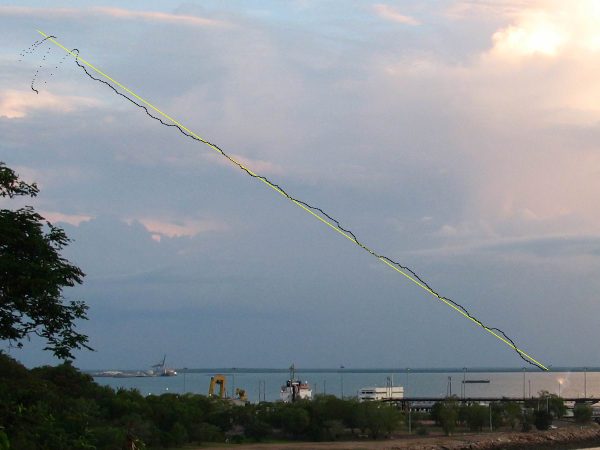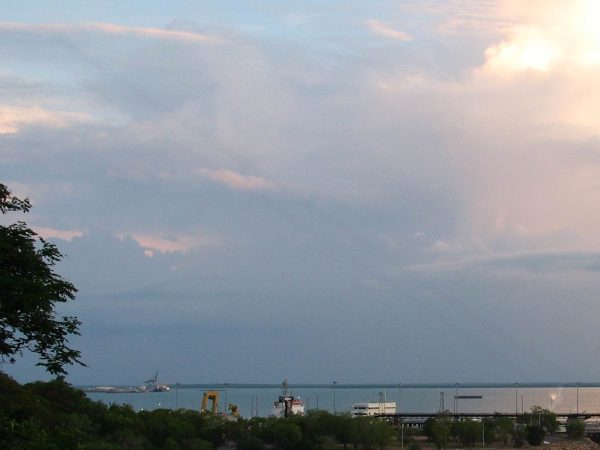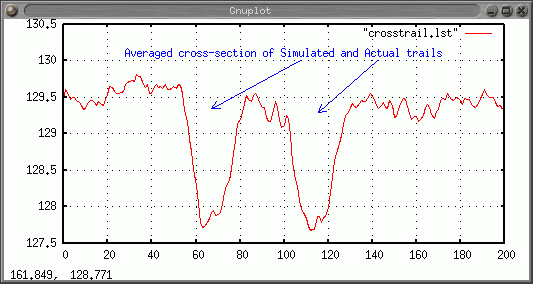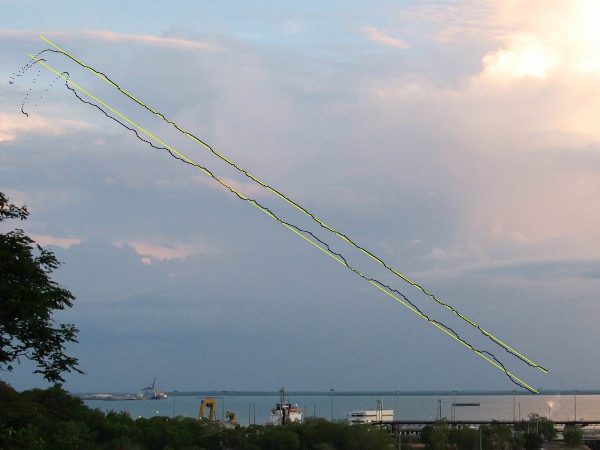MikeH aka Voo wrote:1)For the streak to actually be the trail of something in the far distance the shear size of whatever was falling if anything was falling at all would have to be enormous.
That would be compatible with the contrail theory. Contrails are, indeed, enormous.
2)Item is most likely closer too the camera due to the large trail
So you discount a large object for no apparent reason?
3)Why is the smoke if smoke located in from of the item as it explodes instead of behind it, especially if going at such a high speed
I think you're jumping to conclusions again. Where is the object, and where is the smoke? Also, which direction is the object traveling. The answers to all these questions depends upon the theory, so you can't just dismiss it all with one statement like you did.
4)Looking at the item (bee,wasp, whatever) there seems to be a gap with visible ocean between what was thought to be the flash and smoke.
Actually, no. If you look at a properly developed difference or subtraction image, there is no gap. Bear in mind that the water changes quite a bit from frame to frame because of wave action, so a difference image is expected to have some data wherever there is water. This tends to obscure the trail somewhat, but it's nevertheless clearly visible.
5)Why would the object be transparent?
This is perhaps the easiest question to answer. It's transparent because it is not there for the majority of the exposure. For the part of the exposure where it's not there, whatever is in the background will be exposed on the sensor.
I understand speed and trails especially when it comes to photography
Perhaps not if you don't understand the transparency. This is very elementary photography.
6)Analyzing the water there seems to be 2 abnormalties that would come close to the projected trajectory
Where?
Based on the trajectory, the size of the trail at that distance, if a meteorite, would seem to be proportional.
What are you basing this on? What are you measuring? With the insect theory, the width of the body of the insect explains the width of the trail. Or are you talking about its length? How do you explain the fact that the trail suddenly ends at upper left, prior to the edge of the picture? How do you explain the angle of 33.6 degrees for a meteor?
The small fragment ricocheting or just skimming and breaking up could cause the flash if hitting at a sharp enough angle to almost grind and break up instead of smashing and shattering.
I challenge you to calculate an approximate speed for the meteor using your proposed scenario. Then, assume the object splits up as you suggest. What sort of acceleration would be required to get the various pieces to diverge as far as you allege (note that I don't know where the alleged landing spots are yet).
A direct hit would probably produce less spark or flash then a ricochet..
Why? Also note that any energy used to accelerate the object to its ricochet trajectory would have to come from the object that it ricocheted off of. That would cause damage. Where is the damage?
I think we have all seen what happens when bullets an other objects hit something solid enough. Thnk of the item as a bullet but less dense and more poreous and skimming a strong pole,
If it was more porous and less dense than a bullet, then how could it be a meteor at 33.6 degrees? You need an explanation for how it overcomes the atmospheric resistance.
the hit could produce enough force to dislodge the bulb or break the peices that actually produce light yet not destroy or even make a huge mark. I do not know how closely examined the top of it was or what types of marks were on it. Based on the picture itself, not theories based on bugs and how a camera works when something close flys by but on the picture itself looking at both from far and close distances something coming from the sky and striking the pole seems to be most logical.
I think logical is the wrong word here, since logic was not used at all. In fact, you through out logic in favor of first impressions.
Further examination of the pole itself to show any types of damage whatsoever can change the theory but for the most part being unbiased and all the general conditions seem to favor it being a meteorite.
According to previous posts, the pole was examined and found to be free of damage, except the lamp was nonfunctional.
The smoke could very well be dust and debris dispersing away from the point of impact considering that and peices of the object would most likely be in front of the visible smoke instead of behind it.
Please explain how this debris cloud vanished without a trace in 15 seconds. Please consider the relatively calm conditions and the size of the cloud in your answer.



